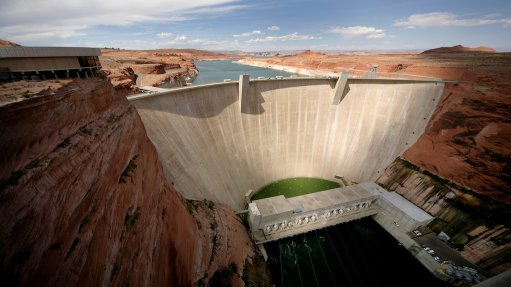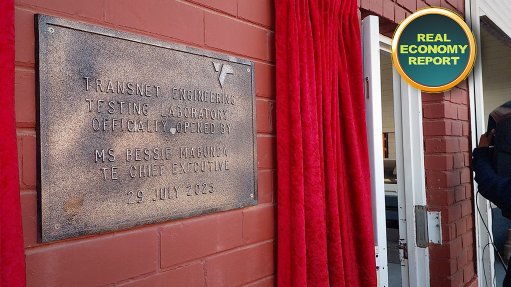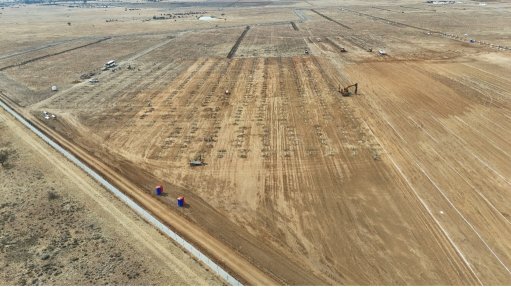Reducing Pumping System TCO – Three Valuable Steps
This article has been supplied.
By Jaque Mare, Product Manager: VSD & Soft Starters, Industry Business at Schneider Electric
Energy costs remain a prevalent factor in the total cost of ownership (TCO) of industrial pumping systems, often accounting for 40% of overall consumption. However, it is possible to reduce the energy consumption of pumping by at least 30 percent if the appropriate energy management practices are put in place.
The first is step is for an organisation to acknowledge the high energy costs of pumping systems and introducing proper steps to implement cost reductions through efficiency improvements. Furthermore, several barriers need to be addressed:
Lack of proper metrics - energy efficiency is traditionally not used in assessing performance; often energy procurement and efficient operations aren’t consistent or standardised metrics are not utilised;
Knowledge gap – a lack of awareness in energy efficiency opportunities is prevalent and as a result, potential savings and other benefits are missed; and
Fear of investment – operations personnel often struggle to present attractive (large or small) investments to their finance organisations.
What is required is the implementation of a sound energy management strategy which features practical and attainable steps to address the reduction of TCO, whilst realising the benefits of an efficient pumping system
Step 1 - Energy Efficiency Management
Industrial production cycles continue to be influenced by variables such as market demand, the weather, local regulations, and energy supply. This means that factory and building operators need to understand how and when energy is used to minimise consumption and related costs.
In the case of pumping systems, efficiency is impacted by:
- A mismatch between the pump deployed and the actual system requirement (i.e.: undersized or oversized); and
- The improper use of throttling valves and damper technologies to control the flow of liquids.
Fortunately, the above can be remedied by implementing simple actions such as replacing fixed drives with variable speed drives. Connected to a pump, a variable speed drive can control speed, pressure, and flow in conjunction with dynamic process and production requirements.
Step 2: Asset Management
The maintenance cost of physical assets can represent as much as 25 percent of TCO. Maintenance, however, is non-negotiable as failure to do so can be catastrophic, resulting in costly downtime and production loss.
In pumping installations, many moving parts mean that proper maintenance of motors, drives, pumps, and associated pipes is crucial. Numerous steps can be taken to assure that maintenance costs are kept at a minimum while integrity of systems is kept stable:
- All pumps should be operated within the parameters of a given pump’s specifications (often stated in the pump supplier’s instruction manual/data sheet);
- Variable speed drives can help to keep the operating point close to the BEP (best efficiency point) and protect the pump against destructive forces generated by inefficiencies.
- Monitoring the operating point of a pump and its efficiency provides diagnostics that can help predict when potential system problems will occur.
Step 3: Energy Cost Management
Building owners, water/wastewater, and oil and gas facility operators are presented with utility bills that have multiple components.
However, by implementing best practices for utility bill management, energy cost reduction can be realised. Below are a few simple actions:
- Review the utility contract to understand the charges associated with the bill and how it can be controlled.
- Adjust the timing of energy usage from the peak rate period to the off-peak period as
- much as possible
- Ensure the correct pump system size (drive + motor + pump).
- Reduce the amount of non-revenue generating energy consumption.
- Applying smart motor starting methods (Variable speed drives) to motor and pump systems
By pursuing best practices in energy efficiency management, asset management, and energy cost management, the TCO of pumping system networks can be reduced by up to 20 percent.
Moreover, one simple technology, the variable speed drive with embedded energy management functionality, has the capability of being a major contributor to achieving this TCO target.
Comments
Press Office
Announcements
What's On
Subscribe to improve your user experience...
Option 1 (equivalent of R125 a month):
Receive a weekly copy of Creamer Media's Engineering News & Mining Weekly magazine
(print copy for those in South Africa and e-magazine for those outside of South Africa)
Receive daily email newsletters
Access to full search results
Access archive of magazine back copies
Access to Projects in Progress
Access to ONE Research Report of your choice in PDF format
Option 2 (equivalent of R375 a month):
All benefits from Option 1
PLUS
Access to Creamer Media's Research Channel Africa for ALL Research Reports, in PDF format, on various industrial and mining sectors
including Electricity; Water; Energy Transition; Hydrogen; Roads, Rail and Ports; Coal; Gold; Platinum; Battery Metals; etc.
Already a subscriber?
Forgotten your password?
Receive weekly copy of Creamer Media's Engineering News & Mining Weekly magazine (print copy for those in South Africa and e-magazine for those outside of South Africa)
➕
Recieve daily email newsletters
➕
Access to full search results
➕
Access archive of magazine back copies
➕
Access to Projects in Progress
➕
Access to ONE Research Report of your choice in PDF format
RESEARCH CHANNEL AFRICA
R4500 (equivalent of R375 a month)
SUBSCRIBEAll benefits from Option 1
➕
Access to Creamer Media's Research Channel Africa for ALL Research Reports on various industrial and mining sectors, in PDF format, including on:
Electricity
➕
Water
➕
Energy Transition
➕
Hydrogen
➕
Roads, Rail and Ports
➕
Coal
➕
Gold
➕
Platinum
➕
Battery Metals
➕
etc.
Receive all benefits from Option 1 or Option 2 delivered to numerous people at your company
➕
Multiple User names and Passwords for simultaneous log-ins
➕
Intranet integration access to all in your organisation

















